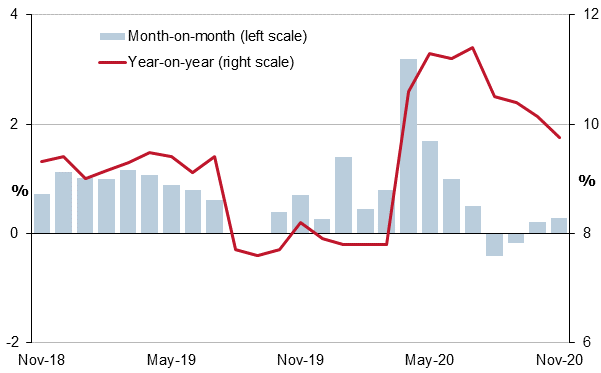For the first time since the COVID-19 pandemic, the year-on-year inflation has fallen below 10 per cent to 9.8 per cent in November 2020, according to the Ghana Statistical Service (GSS).
The rate represents a 0.3 percentage point decrease in consumer inflation which measures the average change in the general price levels of goods and services over a period of time and measured by the Consumer Price Index (CPI), relative to the 10.1 per cent recorded in October 2020.
The year-on-year rate of inflation slowed to 9.8 per cent in November compare with 10.1 per cent the previous month.
Professor Samuel Annim, the Government Statistician, who announced the rate, said the drop was the fourth consecutive monthly fall post Covid-19.
The Greater Accra Region is the only region that recorded a food inflation rate of over 8 per cent (13.7 per cent).
The difference between food (13.7 per cent) and non-food (16.2 per cent) inflation was just 2.5 percentage points, while in the Ashanti Region, the difference was 9.4 percentage points (5.7 per cent compared to 15.1 per cent).
Food contributed 53.0 per cent to the total inflation and thus, it is still the predominant driver of year-on-year inflation.
In contrast to food inflation, non-food inflation did not change, compared to last month, with the year-on-year rate standing at 8.3 per cent.
The inflation of imported goods was 5.6 per cent while that of local goods was 11.5 per cent on average.
Meanwhile, the month-on-month inflation for both imported goods and local goods was 0.4 per cent.
The main contributor to local month-on-month inflation was the reduction of prices of locally produced food items.
Food items had an average year-on-year inflation of 12.0 per cent and non-food items, an inflation rate of 9.2 per cent.
Imported food items had a month-on-month inflation rate of 0.8 per cent, while non-food imported items had an inflation rate of 0.3 per cent.
By:Isaac Clottey













